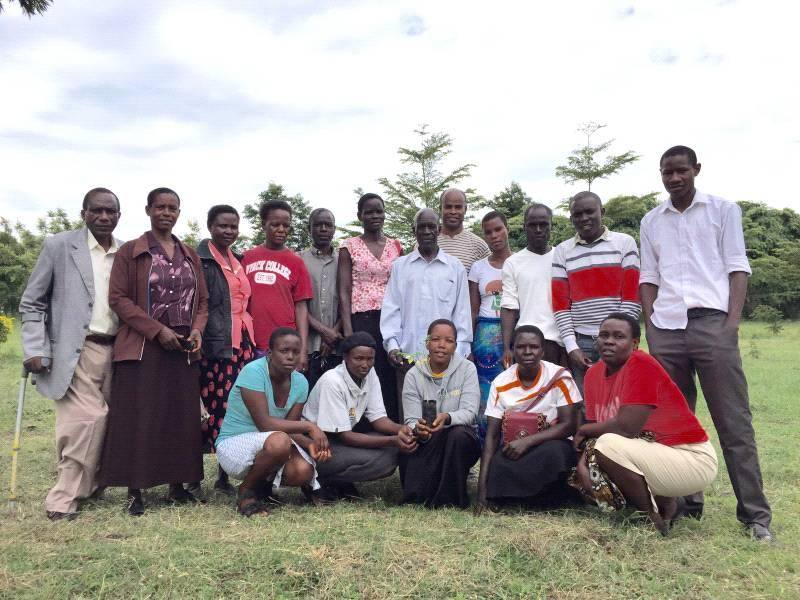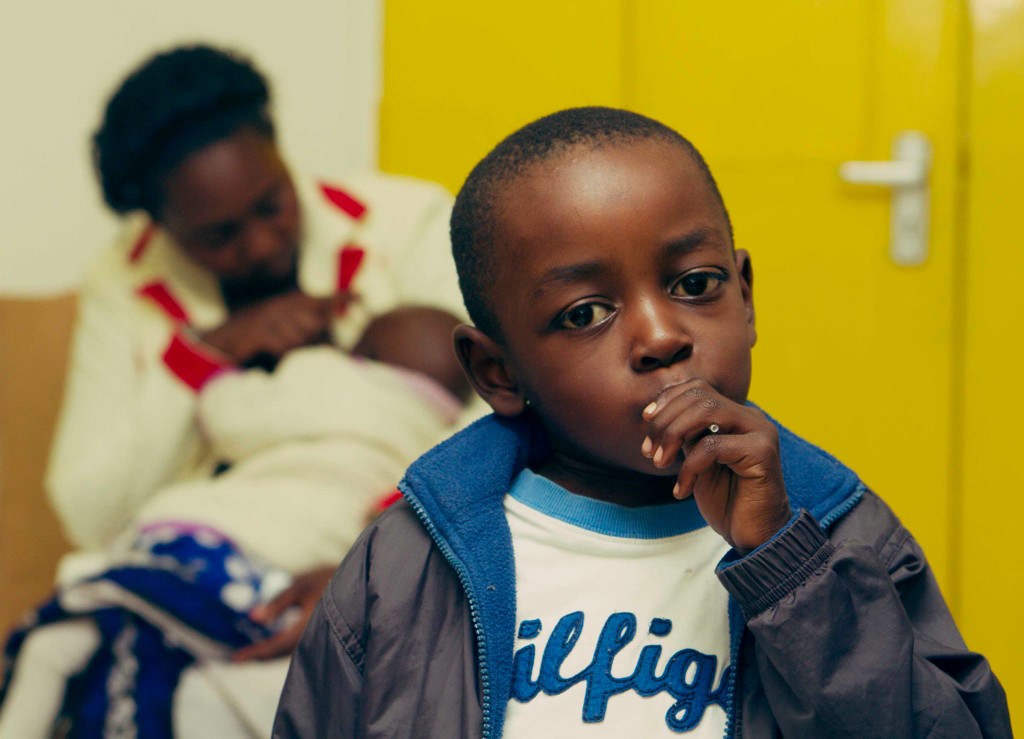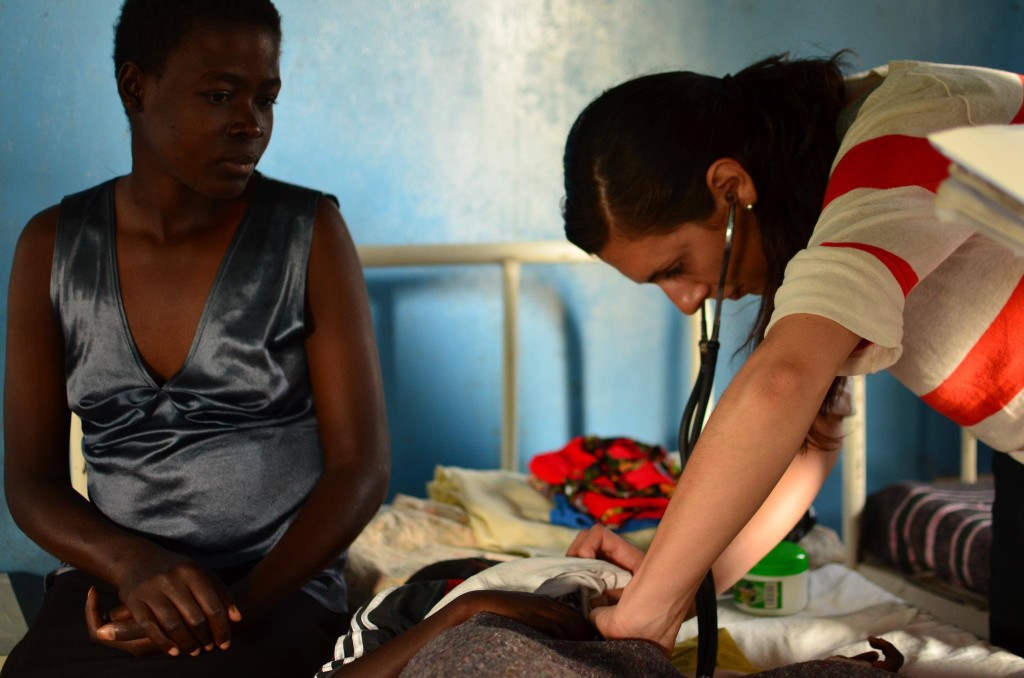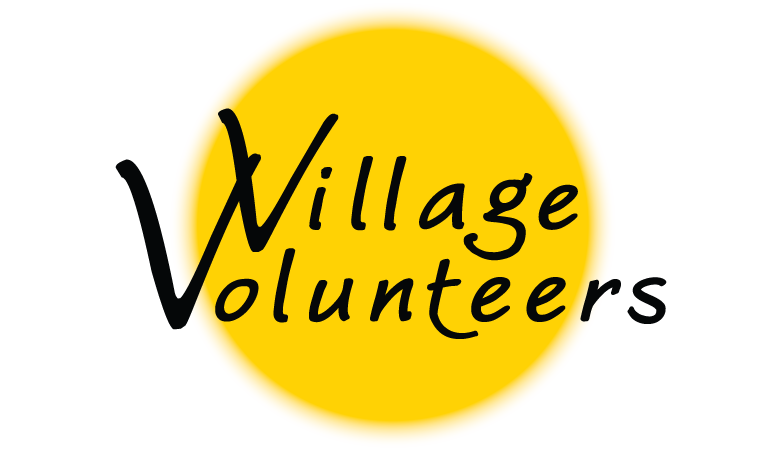Mama Maria Clinic, Muhuru Bay, Kenya: Earlier this month, several women – community health workers, ‘opinion leaders’, village elders, mothers of children with sickle cell anemia – participated in a training workshop on planting, harvesting and using the moringa tree so they can provide vital nutrition their families desperately need. This is part of a recent effort by Village Volunteers to combine two of our initiatives in tackling the endemic of sickle cell disease starting in Muhuru Bay. The Moringa Tree Project strives to combat malnutrition through the provision of the nutrient-rich moringa plant to poverty stricken areas, and the Sickle Cell Anemia project works in tandem with college students from around the world who work with local health care providers using culturally appropriate curricula to provide support and education to families affected by sickle cell disease. By pooling knowledge and resources from grassroots organizations like Sickle Cell Strong and another partner, Asembo Kar Geno, we are working with health officials and to form the Mama Maria Clinic’s Muhuru Bay Sickle Cell Warrior Chapter. This will provide necessary educational support, nutritional knowledge, agricultural training and psychological counseling to families to encourage positive living for people with sickle cell disease. Our aim is to take what we learn from this pilot site and replicate this model of shared community learning around hospitals/clinics in eastern Kenya where sickle cell disease is endemic.

Moringa education training to parents of children with Sickle Cell Disease by Asembo Kar Geno at Mama Maria Clinic, Muhuru Bay, Kenya.
What is Sickle Cell Disease (SCD)?
Sickle Cell Disease (SCD) or sickle cell anemia is a genetic disease of the blood involving an abnormality in the structure of hemoglobin, the substance responsible for carrying oxygen within the red blood cells. In simpler terms, normal red blood cells are round, soft and donut-shaped. They can easily maneuver through the tiniest blood vessels in our body. But in a state where there is a decrease in oxygen levels within the body, the red blood cells lose their round conformation and adopt a rigid, fibrous C shape. In this state, the red blood cells are not capable of going through the tiny blood vessels as easily as their former conformer, and this leads to the blockage of oxygen-rich blood from various tissues and organs. This manifests as extreme, excruciating pain caused by hypoxia and cell death. Left untreated, SCD can lead to organ damage/failure, chronic leg ulcers, retinopathy/visual impairment, priapism, in addition to insufferable pain.
Marie Ojiambo of Sickle Cell Strong talks about how painful SCD can be: “In my line of work a patient suffering from SCD is adorned with the honorary title of ‘warrior’, despite his frail frame, yellowing eyes, distended abdomen and constant fatigue. The insurmountable pain that sufferers of SCD have to undergo in a lifetime is inexpressible. The constant health challenges that they have to overcome while continuing to go about their daily duties and while acting ‘normal’ to ward off any stigma affords these remarkable individuals the title – warrior!”
What are the barriers to the effective management of SCD in Kenya?
 SCD is prevalent in much of sub-Saharan Africa, but unfortunately remains a very low priority for many health ministries. According to one estimate, cross-sectional population surveys show that children with one form of SCD have a mortality rate of 50%-90%. But a staggering pilot study in Benin showed that with an effective and timely screening of newborns and proper follow-up care, it is possible to reduce the mortality rates of children suffering from SCD to the same level as other children who do not have the disease.
SCD is prevalent in much of sub-Saharan Africa, but unfortunately remains a very low priority for many health ministries. According to one estimate, cross-sectional population surveys show that children with one form of SCD have a mortality rate of 50%-90%. But a staggering pilot study in Benin showed that with an effective and timely screening of newborns and proper follow-up care, it is possible to reduce the mortality rates of children suffering from SCD to the same level as other children who do not have the disease.
In Africa, access to proper healthcare has been the greatest challenge for vulnerable patients. Aside from this, lack of knowledge on the disease, unavailability and/or unaffordability of medication and diagnostic equipment, lack of health insurance options for patients and very few trained specialists at health care institutions are some of the reasons why SCD treatment is woeful in Kenya and most Sub Saharan African countries. Some of the basic necessities that need to be put in place include screening/diagnosis options, genetic and couples counseling centers coupled with education centers, first-line pharmacotherapy with specialists who can advise on how the drug is taken and how to monitor the patients’ progress throughout treatment, and affordable health insurance options especially for marginalized groups, patient transition programs, equipment for management of the disease and inpatient treatment.
How Village Volunteers’ is working with SCD patients and their families in Muhuru Bay, Kenya
At Mama Maria Clinic’s Muhuru Bay chapter, Village Volunteers is funding a series of workshops with families who have one or more members with SCD to help raise awareness around the management, control, and treatment of the disease. So far 20 families in the village have signed-up to avail of culturally sensitive, medically researched and vetted curriculum (soon to be available on our online Sustainable Village Library).
Further, thanks to Peter Kithene Founder of Mama Maria Clinic and Hospital, there is 2 acres of land around the clinic available for moringa planting and harvesting, the produce from which will provide critical nutritional support to families and vulnerable children. As part of the Moringa Tree Project, Asembo Kar Geno’s training under Raphine Muga on using moringa as a food source covered topics such as planting methods (including demonstrations), ideal growing conditions, pruning, harvesting seeds and leaves, processing the powder from leaves, the plant’s nutritional and medicinal benefits, and recipes. 43 seedlings and powdered moringa were made available to Mama Maria Clinic, of which 18 seedlings were given to each of the participants and 25 were planted on the compound under Raphine’s guidance. He is currently working with the clinic director Silas Nguru to prepare land where they can plant 200 more saplings.
Finally, our work with the clinic is deeply stressing on psychological assistance with counseling for families who struggle with depression linked to SCD. This is crucial for families who feel a sense of isolation in a community where the disease in the family is seen as a curse, and for whom feeding and nourishing their children is a constant challenge. Our aim is to get families talking so they can share and unload their burdens and feel camaraderie with others.
 Phenomenal volunteer opportunities in Kenya and Ghana
Phenomenal volunteer opportunities in Kenya and Ghana
In Medicine: Medical students can shadow and assist doctors considering based on their education and experience. Volunteer involvement in medical operations of the clinic will be based on his/her skills and abilities, determined by the doctors on staff.
In Maternal and Child Care: Medical students can not only assist in delivery, but also in the provision of continued infant care, subsequent check-ups, immunization services, as well as nutritional monitoring for mother and child.
Public health/Global Health: Interns can work in educating the community with appropriate curriculum (provided) on diseases endemic in Africa, such as sickle cell anemia, HIV/AIDS, malaria, etc.
Psychological counseling and therapy: Work with families supporting sickle cell anemia affected children and provide a place for them to open up and share their grief and burdens.
Click here to learn more about sickle cell and click here to learn more about Mama Maria Clinic and Hospital.
Explore volunteer opportunities and Apply Online!
For inquiries: shana@villagevolunteers.org
Special thanks to Marie Ojiambo of Sickle Cell Strong for valuable inputs on this post.
